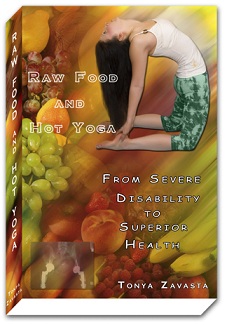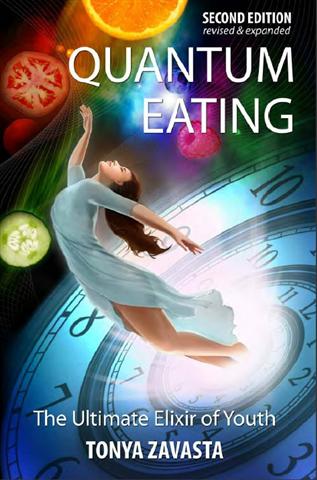Eastern Medicine and Raw Foods

One of my yoga instructors is an avid student of Ayurvedic medicine. She’ll often come to class with a story about a family member coming down with a sore throat, a fever, a stomach ailment, and how she cured it using Ayurvedic medicine. Ayurveda is the earliest school of medicine known to humans.
Ayurvedic and TCM
Ayurvedic and Chinese medicine share several similarities…Both use diet, herbs and lifestyle practices to balance different body types in order to cure or prevent illness or imbalance that may lead to disease. And both have been successfully practiced in India and China for thousands of years.
Ayurvedic medicine is based on the notion that there are three main body types or doshas: the vata, the kapha, and the pitta types. These body types, though they tend to overlap, also coincide with the hot or cool, damp or dry properties of the elements—earth, air, fire and water.
Similarly, Chinese medicine—we’ll call it, here, Traditional Chinese Medicine, or TCM—is based on the interrelation of two opposing energies called yin and yang, and how they correspond to the five elements of traditional Chinese culture—water, wood, fire, earth and metal—and the flow of life force or chi within the body.
Raw-food health seekers, by the way, find consternation in the fact that the Ayurvedic and Chinese traditions both stand generally opposed to all-raw diets for the majority of people.
Why the Need for So Many Cures?
But back to my instructor … It's fabulous that my yoga instructor can cure these disorders. But I can’t help thinking: Why are they getting sick in the first place? If a cooked food diet is considered healthier and safer by either train of thought, Ayurvedic or TCM, why the need for so many cures? In my mind, the only reason they have so many ailments is because their diet is not delivering abundant, radiant health.
Consider one historical factor … The ancient Asian cultures where these practices originated have had to survive, through much of their development, eating whatever was available—for most of this time, cooked grains. Since eating large amounts of cooked grains is so deeply entrenched in these cultures, perhaps for them there will always be a need for remedies and medicines. It is much easier to find an herb to balance your blood sugar than to stop eating rice—if rice is the most abundant and inexpensive food in your country.
You’ll note that my latest book Raw Foods and Hot Yoga, like most other books in the raw foods field, gives no remedies for common ailments colds, headaches, edema and so on. Why? Because these problems generally disappear when you follow a well-tailored raw food regimen. That is the key to balance: tailoring your raw food regimen.
Conceived and handled properly, the raw food diet can work hand in hand with Ayurvedic or TCM principles by individualizing the diet for optimum health and constitutional balance.
Dr. Gabriel Cousens, one of the most prominent names in the raw foods arena, happens to be an ambassador for Ayurvedic medicine, and has been on raw foods for many years. He has written some excellent books offering a wealth of valuable information on balancing the various body types, while following a 100 percent raw food diet.
Another author well qualified to help you succeed on an all-raw diet, yet also adhering to Ayurvedic principles is Dr. Walter Shantee Kacera. Also, the raw foodist Brigitte Mars, well trained in Chinese medicine, demonstrates that it is entirely possible to succeed on a raw foods diet despite claims that it leads to imbalances and problems.
Listen to Your Body
If you are eating entirely from your dogma—or from your head—you may run into problems. Listen to your body. I, along with others, have found that you will often crave the type of raw food your body needs, and be repelled by the kinds it doesn’t. Once your body is cleansed, you can start learning to trust it. It will not steer you wrong. Add the appropriate spices and herbs to your diet that help to balance you.
Eat seasonally … eat locally … eat organically. This, I believe, will go a long way toward helping you to stay acclimated and balanced. If you live in Michigan, don’t try to eat pineapple every day in January. In a cold climate, you can eat raw foods and herbs with warming qualities. In a hot climate, you can eat foods with cooling, hydrating qualities.
But diet is just a start to radiant, robust health. You must also get the exercise, sleep, fasting and relaxation that your body type calls for. Again, incorporating ideas from either Ayurvedic or TCM, as you may prefer, can be a superb way to ensure you don’t run into problems.
Ounce of Prevention ...
If I were to need medicinal help, treatment or other assistance, I would definitely pursue help with Ayurvedic or TCM, as these are both more natural and ancient methods, which I consider to be superior to conventional medicine for disease prevention and health maintenance. What’s more, these traditions seem to have a richer understanding of the inner workings of the human body.
I also know, from personal experience, that a 100 percent raw food diet has in no way harmed me or caused me imbalances, or a ‘damp spleen,’ or any other pesky condition that, in theory, can happen on an all-raw diet. Things don’t have to be black and white. Ancient lifestyle and medicinal practices are natural and helpful, should you need what they have to offer. At the same time, by following an intelligent, well tailored raw food lifestyle, I have found that an ounce of prevention truly is worth a pound of cure.



